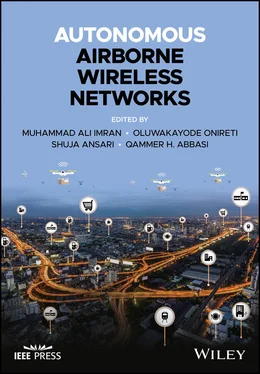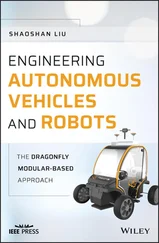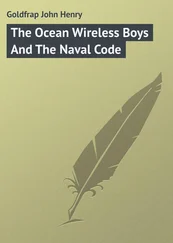Sabit Ekin
School of Electrical and Computer Engineering, Oklahoma State University
Stillwater, OK
USA
Syed A. Hassan
School of Electrical Engineering and Computer Science (SEECS) National University of Sciences and Technology (NUST)
Islamabad
Pakistan
Muhammad A. Imran
James Watt School of Engineering University of Glasgow
Glasgow
UK
Jamey D. Jacob
School of Mechanical and Aerospace Engineering, Oklahoma State University
Stillwater, OK
USA
Dushantha Nalin K. Jayakody
Department of Information Technology, School of Computer Science and Robotics, National Research Tomsk Polytechnic University
Tomsk
Russian Federation
and
Centre for Telecommunication Research, School of Engineering Sri Lanka Technological Campus
Padukka
Sri Lanka
Amit Kachroo
School of Electrical and Computer Engineering, Oklahoma State University
Stillwater, OK
USA
Aziz Khuwaja
School of Engineering, Electrical and Electronic Engineering Stream University of Warwick
Coventry
UK
Paulo V. Klaine
Electronics and Nanoscale Engineering Department University of Glasgow
Glasgow
UK
Hassan Malik
Department of Computer Science Edge Hill University
Ormskirk
UK
Bacco Manlio
Institute of Information Science and Technologies (ISTI) and Institute of Science and Technologies for Energy and Sustainable Mobility, National Research Council (CNR)
Pisa
Italy
Ruggeri Massimiliano
National Research Council (CNR) Institute of Science and Technologies for Energy and Sustainable Mobility
Ferrara
Italy
Lina Mohjazi
James Watt School of Engineering University of Glasgow
Glasgow
UK
Samuel Montejo‐Sánchez
Programa Institucional de Fomento a la I+D+i, Universidad Tecnológica Metropolitana
Santiago
Chile
Hieu V. Nguyen
The University of Danang – Advanced Institute of Science and Technology
Da Nang
Vietnam
Qiang Ni
School of Computing and Communications
Lancaster University
Lancaster
UK
Phu X. Nguyen
Department of Computer Fundamentals, FPT University
Ho Chi Minh City
Vietnam
Van‐Dinh Nguyen
Interdisciplinary Centre for Security, Reliability and Trust (SnT), University of Luxembourg
Luxembourg
Oluwakayode Onireti
James Watt School of Engineering University of Glasgow
Glasgow
UK
and
Department of Electrical Engineering, Sukkur IBA University
Sukkur
Pakistan
Barsocchi Paolo
Institute of Information Science and Technologies (ISTI) and Institute of Science and Technologies for Energy and Sustainable Mobility, National Research Council (CNR)
Pisa
Italy
Haris Pervaiz
School of Computing and Communications
Lancaster University
Lancaster
UK
Olaoluwa Popoola
James Watt School of Engineering University of Glasgow
Glasgow
UK
Tharindu D. Ponnimbaduge Perera
Department of Information Technology, School of Computer Science and Robotics, National Research Tomsk Polytechnic University
Tomsk
Russian Federation
Adithya Popuri
School of Electrical and Computer Engineering, Oklahoma State University
Stillwater, OK
USA
Saad Qaisar
School of Electrical Engineering & Computer Science (SEECS) National University of Sciences and Technology
Islamabad
Pakistan
and
Department of Electrical and Electronic Engineering
University of Jeddah
Jeddah
Saudi Arabia
Marwa Qaraqe
Division of Information and Computing Technology, College of Science and Engineering, Hamad Bin Khalifa University (HBKU)
Doha
Qatar
Navuday Sharma
Test Software Development Ericsson Eesti AS
Tallinn
Estonia
Richard D. Souza
Department of Electrical and Electronics Engineering, Federal University of Santa Catarina
Florianóplis
Brazil
Muhammad K. Shehzad
School of Electrical Engineering and Computer Science (SEECS) National University of Sciences and Technology (NUST)
Islamabad
Pakistan
Oh‐Soon Shin
School of Electronic Engineering Soongsil University
Seoul
South Korea
Sean Thalken
Electrical and Computer Engineering Department University of the Pacific
Stockton, CA
USA
Jason To‐Tran
Electrical and Computer Engineering Department University of the Pacific
Stockton, CA
USA
Christopher Uramoto
Electrical and Computer Engineering Department University of the Pacific
Stockton, CA
USA
Muhammad Usman
Division of Information and Computing Technology, College of Science and Engineering, Hamad Bin Khalifa University (HBKU)
Doha
Qatar
Surbhi Vishwakarma
School of Electrical and Computer Engineering, Oklahoma State University
Stillwater, OK
USA
Davis Young
Electrical and Computer Engineering Department University of the Pacific
Stockton, CA
USA
Lei Zhang
Electronics and Nanoscale Engineering Department University of Glasgow
Glasgow
UK
Muhammad A. Imran, Oluwakayode Onireti, Shuja S. Ansari and Qammer H. Abbasi
James Watt School of Engineering, University of Glasgow, Glasgow, UK
Airborne networks (ANs) are now playing an increasingly crucial role in military, civilian, and public applications such as surveillance and monitoring, military, and rescue operations. More recently, airborne networks have also become a topic of interest in the industrial and research community of wireless communication. The 3rd Generation Partnership Project (3GPP) standardization has a study item devoted to facilitating the seamless integration of airborne wireless networks into future cellular networks. Airborne wireless networks enabled by unmanned aerial vehicles (UAVs) can provide cost‐effective and reliable wireless communications to support various use cases in future networks. Compared with high‐altitude platforms or conventional terrestrial communications, the provision of on‐demand communication systems with UAVs has faster deployment time and more flexibility in terms of reconfiguration. Further, UAV‐enabled propagation can also offer better communication channels due to the existence of the line‐of‐sight (LoS) links, which are of short range.
Despite the several benefits of airborne wireless networks, they suffer from some realistic constraints such as being energy constrained because of the limited battery power, safety concerns, and the strict flight zone. Hence, developing new signal processing, communication, and optimization framework for autonomous airborne wireless networks is essential. Such networks can offer high data rates and assist the traditional terrestrial networks to provide real‐time and ultrareliable sensing applications for the beyond‐5G networks. Achieving this gain requires the correct characterization of the propagation channel while considering the high mobility dynamics. Accurate channel modeling is imperative to fulfill the ever‐increasing requirements of the end user to transfer data at higher rates. The air‐to‐ground (AG) and the air‐to‐air (AA) channel propagation models for the airborne wireless network channel can be characterized by using measurement and empirical studies. Further, the key performance indicators (KPIs) of airborne wireless networks such as flight time, trajectory, data rate, energy efficiency, and latency need to be optimized for the different use cases.
Читать дальше












